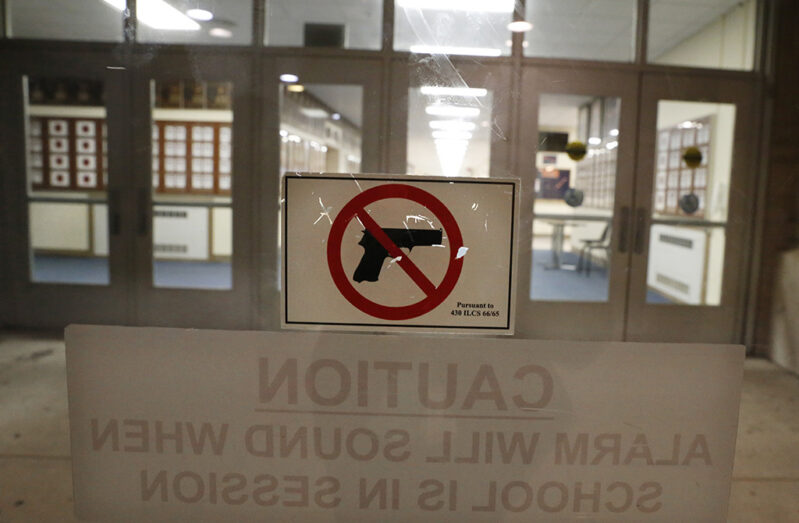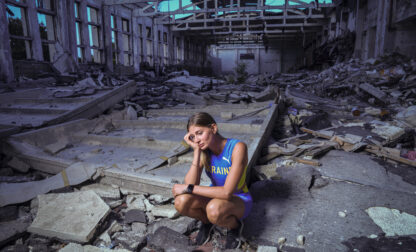This fall, America’s students kicked off their fourth pandemic school year — and returned to classrooms just months after the massacre in Uvalde, Texas. Kids in the U.S. have yet to experience a pandemic year without tremendous disruption.
To meet the moment, AP’s new education team filled an unprecedented six weeks of back-to-school coverage with hard-to-get,student-centered storytelling. Partnering with all corners of the AP newsroom,this comprehensive enterprise reporting was performed by a robust team of journalists, including multiformat journalist Martha Irvine and the deeply sourced Sandy Hook team.

Interviewing students and families is extremely difficult when school is out. But AP’s team spent weeks and months finding the right subjects. The package of stories captured the crunch to teach third graders to read in Atlanta, issues of youth mental health prompting the launch of emotional check-in software at a Kentucky elementary school, fears around feeling ill-prepared for college among pandemic students in Milwaukee,and much more.
Contributing to the expansive coverage were:
— Education reporters Collin Binkley,Jocelyn Gecker,Bianca Vázquez Toness and Sharon Lurye.
— Multiformat journalist Irvine of the Global Enterprise Team.
— Administrative correspondents Michael Casey and Kantele Franko.
— Newspersons Dave Collins,Pat Eaton-Robb and Heather Hollingsworth.
— Report for America fellows Brooke Schultz and Arleigh Rodgers.
— Videojournalist Joseph Frederick and visuals intern Julia Nikhinson.
A major topic for the team was school safety. Looking for deeper angles to pursue on guns and schools after the massacre in Uvalde,Irvine proposed a story from a case in Illinois — on a shooting that was prevented. A teen had been arrested with a loaded gun outside his high school in Oak Park,Illinois, a suburb that borders Chicago’s West Side.
After working over the summer to gain the trust of the teen’s attorney and ultimately landing an exclusive one-on-one interview with the young man,on camera in his home, Irvine produced a multifaceted story about the challenges of school safety — especially at a racially and economically diverse school that had,in 2020, dropped its school resource officer program.

But this wasn’t simply about stopping a potential shooting at or near a school. It was a case that examined universal themes reverberating across districts nationwide: security vs. students’ second chances,discipline,gun policies,juvenile justice,and more. Irvine also layered her piece — text,photos and video — with the teen’s personal story,and digitial storytelling producer Dario Lopez created a dynamic AP News presentation.
And there was still more compelling enterprise: In the days after Uvalde,AP started reporting for a project that leveraged the trust Eaton-Robb and Collins have built with survivors of the 2012 shooting in Sandy Hook,Connecticut. They asked the survivors to share advice with students who had survived the massacre in Uvalde. Young people who had never before spoken with the media agreed to talk with AP, thanks to the care Eaton-Robb and Collins brought to the story. Survivors knew the AP pair would report accurately and with sensitivity.
Feedback on the Sandy Hook story showed the power of AP’s journalism. Business editor Noreen Gillespie,a Sandy Hook native who edited the package,received comments from readers such as: “This brought me to tears.” “The photos stopped me in my tracks.” And, “these kids are speaking in a way that helped me understand what they actually went through.”
In all,the impressive efforts yielded 19 back-to-school enterprise stories — including content from the core Education team,plus partners around the country,and collaborations with two newsrooms outside AP — and 11 accompanying video packages for online and broadcast. Timing the coverage for the entire country’s back-to-school period paid off. Through Sept. 11,the text pieces in the enterprise package performed well,including 861,000 views on AP News and 233,000 Facebook interactions.
Further expanding engagement,Gecker and editors on AP’s education team took the conversation on mental health to Twitter Spaces,with tips for parents and teachers from a source at the National Center on Student Mental Health. Nearly 37,000 people have since tuned in.
For ambitious reporting and collaboration that took AP’s coverage well beyond routine back-to-school narratives,the team of Binkley,Gecker,Vázquez Toness,Irvine,Collins,Eaton-Robb,Nikhinson,Frederick,Lurye,Hollingsworth,Schultz,Casey, Rodgers and Franko is AP’s Best of Week — Second Winner.
Visit AP.org to request a trial subscription to AP’s video,photo and text services.
For breaking news, visit apnews.com.




